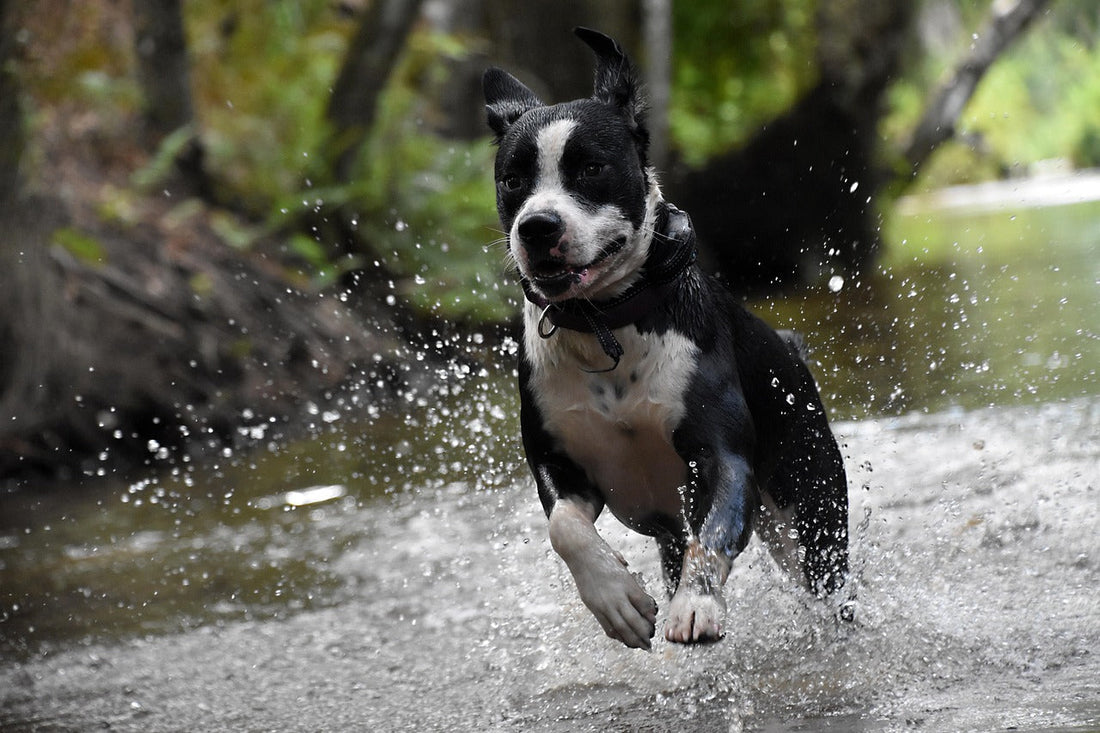Regular exercise is crucial for your dog's physical and mental well-being. Just like humans, dogs need to stay active to maintain a healthy weight, strong muscles, and a happy mindset. Exercise helps prevent a range of health issues, reduces stress, and can even improve behavior. Here’s how to ensure your dog stays healthy and fit!
1. Know Your Dog’s Exercise Needs
Different breeds, ages, and sizes of dogs have varying exercise needs. While a Border Collie or Labrador may need lots of vigorous exercise, a senior or smaller breed like a Dachshund might have lighter activity requirements. Before starting any exercise routine, make sure to understand your dog’s individual needs and consult your veterinarian if you're unsure.
- Puppies generally have high energy but should avoid too much exercise to protect growing joints.
- Adult dogs typically need 30 minutes to 2 hours of exercise each day, depending on the breed.
- Senior dogs might benefit from low-impact activities, but exercise is still essential to keep them mobile and healthy.
2. Make Walks Part of the Routine
One of the simplest and most effective ways to exercise your dog is through daily walks. Walking provides physical exercise while offering mental stimulation through new sights, sounds, and smells. Aim for at least one walk per day, but depending on your dog’s energy level, you might need to go for two or more.
Tips for walk success:
- Keep the pace steady but adjust depending on your dog’s age and fitness level.
- Use a leash and harness to keep your dog comfortable and secure.
- Bring waste bags to clean up after your dog.
- If your dog has high energy, try a jog or run for added intensity.
3. Play Games and Mental Stimulation
Exercise doesn’t always have to mean a formal walk or run. Interactive play is another great way to keep your dog active and engaged. Games like fetch, tug-of-war, or hide-and-seek provide both physical activity and mental stimulation.
- Fetch is excellent for high-energy dogs. Throwing a ball or toy helps them burn energy quickly.
- Tug-of-war can strengthen muscles and help reinforce positive behavior (just make sure to play gently).
- Puzzle toys challenge your dog’s brain and keep them busy, helping them stay mentally sharp.
4. Use the Dog Park for Socialization and Exercise
A dog park can be a great way for your dog to socialize with other pups while getting some exercise. Running around with other dogs allows them to burn energy, play, and develop social skills. Just be mindful of other dogs’ behavior and intervene if necessary to ensure a safe environment.
Tips for dog park success:
- Supervise your dog closely, especially if they are meeting new dogs.
- Bring fresh water for your dog to stay hydrated.
- Keep an eye on your dog’s energy level to avoid overexertion.
5. Swimming for Low-Impact Exercise
Swimming is an excellent low-impact exercise, perfect for dogs with joint issues or older dogs. Many dogs love swimming, and it provides a full-body workout. The water resistance strengthens muscles while being easy on the joints.
- Take your dog to a pet-friendly beach, lake, or pool.
- If your dog is new to water, start slowly and encourage them with treats or toys.
- Always supervise your dog near water to ensure their safety.
6. Keep Exercise Fun and Varied
Variety is key when it comes to keeping your dog engaged in exercise. Regularly changing up the type of activity can help prevent boredom. Consider taking your dog on hikes, exploring new walking routes, or teaching them new tricks to keep their body and mind active.
7. Watch for Signs of Overexertion
Just like people, dogs can overdo it with exercise, especially in hot or humid weather. Be aware of signs of fatigue, including excessive panting, limping, or reluctance to continue walking. Always make sure your dog stays hydrated and take breaks as needed.
Signs your dog may need a break:
- Excessive panting or drooling
- Lagging behind or refusing to walk
- Limping or holding up a leg
- Vomiting or diarrhea
8. A Healthy Diet Complements Exercise
Exercise is only one part of the equation for a healthy dog. A balanced, nutritious diet tailored to your dog's age, breed, and health condition is equally important. Make sure your dog gets the right amount of food to support their energy needs, and keep an eye on their weight to avoid obesity.
9. Regular Vet Checkups and Monitoring Health
Regular vet checkups are essential for maintaining your dog’s health. Your vet can provide guidance on the best exercise plan based on your dog’s individual health conditions and physical abilities. Older dogs or dogs with health issues, such as arthritis or heart disease, might require a modified exercise plan.
Conclusion
Keeping your dog active is essential for their physical health, mental well-being, and happiness. Whether through daily walks, playtime, or exploring new activities, exercise should be an enjoyable and integral part of your dog’s routine. By providing the right amount of exercise for their breed and health condition, you’re helping them stay healthy, happy, and live a long, fulfilling life by your side.

